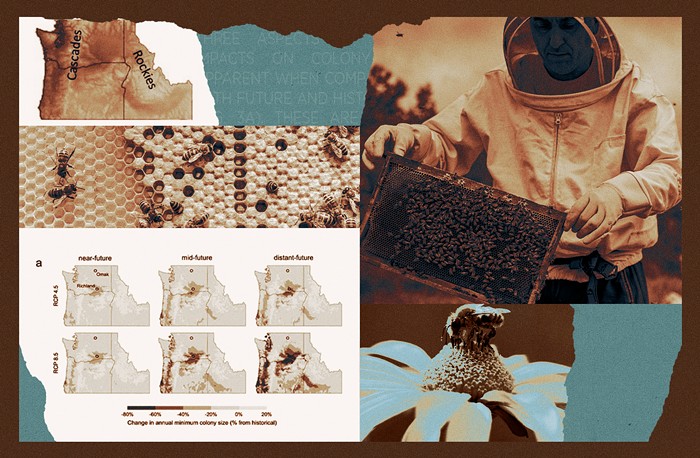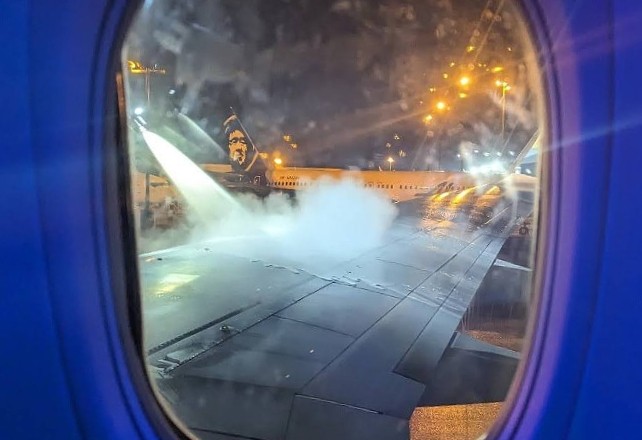A new study from researchers at Washington State University and the US Department of Agriculture’s Carl Hayden Bee Research Center suggests warmer falls and winters might be putting human-managed honey bee colonies in danger of eventual collapse.
Considering these pollinators aid cultivation for around three-quarters of global crops–including the tastiest and healthiest foods in our diets, such as fruits, vegetables, and nuts–the threat poses serious implications for our food security and for an agricultural industry that depends on honey bees. Researchers concluded that placing bees in cold storage for the winter could lead to their salvation.
Bees don’t age chronologically like we do, they work themselves to death (like we do), explained WSU Assistant Research Professor Brandon Hopkins.
“They have this expression: When bees are flying, they’re dying,” he said.
Because each wing flap brings them closer to eternity, a bee busy foraging for food can keel over in less than two weeks. (If one of these workaholics were your friend, you’d stage an intervention.)
Bees born in autumn generally don’t reach that foraging stage, and instead they spend winter confined to the hive, consuming the honey reserves their forefathers died collecting, all while shivering in a cluster around the queen for warmth. Because they’re not flying, they can live months longer, Hopkins said.
The problem with unseasonably warm weather is that honey bees destined to hunker down for winter will instead continue foraging. Bees have not yet discovered the Gregorian calendar, so they forage whenever temperatures reach about 50 degrees Fahrenheit, even when there’s no food to find. Come spring, these beleaguered adult workers die faster than their replacements are born, resulting in a smaller colony that struggles to keep the brood warm in the winter. Over time, a colony can dissolve under this pressure.
Gloria DeGrandi-Hoffman, study co-author and research leader at the USDA’s Carl Hayden Bee Research Center in Tucson, Arizona, developed the population dynamics modeling software the team used for their experiment. Called VARROAPOP, the software mathematically predicts how colonies behave under different conditions, and it can account for things like pesticides, an infestation of parasitic varroa mites, and, of course, weather.
“The model itself is driven by weather conditions because I wanted a model that could simulate colonies anywhere in the world by just putting their weather into it and using it to predict queens eggs laying rate, foraging, and that sort of thing,” she said. “I thought if I could get a teammate who knows how to incorporate future climate scenarios into our model, we could start predicting what the future is going to look like.”
Researchers ran a series of simulations using climate predictions for Washington that span from the near-future (before 2055) to the end of the century. The scientists also accounted for human behavior, modeling scenarios in which we passed serious climate policy to significantly reduce our emissions, do almost nothing, and somewhere in the middle of those two extremes. Historically, bee colonies in the PNW have successfully bounced back after winter, but that could change.
The results showed that honey bee colonies that winter outside in the Pacific Northwest were at risk of colony collapse in spring, even in scenarios where humans reduced their greenhouse gas emissions. Data also showed that bees in colder climates such as Omak, which is north of Seattle, fared far better than those in Richland near the Oregon border. Simulations showed spring populations plummeting to 9,000 adult bees by the 2050s. Colonies that small aren’t likely to make it.
Because the simulations did not account for malnutrition, disease, parasites, and pesticides, and because they assumed queens were laying enough eggs to grow the colony, these grim predictions could still be considered “best-case scenarios.”
Sure sounds bleak, but that’s where cold storage comes in. Even in an end-of-the-century Richland, keeping bees in a controlled environment from October to April, chilled at just below 40 degrees, led to populations rebounding in the spring.
Cold storage is a growing practice, with beekeepers storing about 30 percent of commercial colonies inside for the winter, Hopkins said. While this potential mitigation strategy could work, cold storage still requires energy. The paper notes that at least in the Pacific Northwest, a significant amount of energy production is relatively clean and that cold storage facilities typically place solar panels on the roof. You can really pack bees in there as well. One building can store between 10,000 and 80,000 colonies.
An alternative is physically moving bees to warmer climates for winter. It sounds absurd, but we move bees for industrial agricultural production all the time. Each year, truckers haul literally millions of bee colonies to California to pollinate the state’s 1.3 million acres of almond trees. DeGrandi-Hoffman said cold storage can be a far less-costly solution that protects bees from environmental risks. All beekeepers need to worry about is monthly rent, she said.
The research underscores our need to cut emissions. Pollinators are key not just to human health and agricultural production, but also to natural landscapes and soil stabilization. If you look at nature as a system and pull pollinators out of it, then the system has a hard time righting itself.
“Climate change is affecting bees in obvious ways, but as you see in this paper, also in very subtle ways,” DeGrandi-Hoffman said. “The effects are something that we all need to be aware of in the importance of reversing climate change.”

















